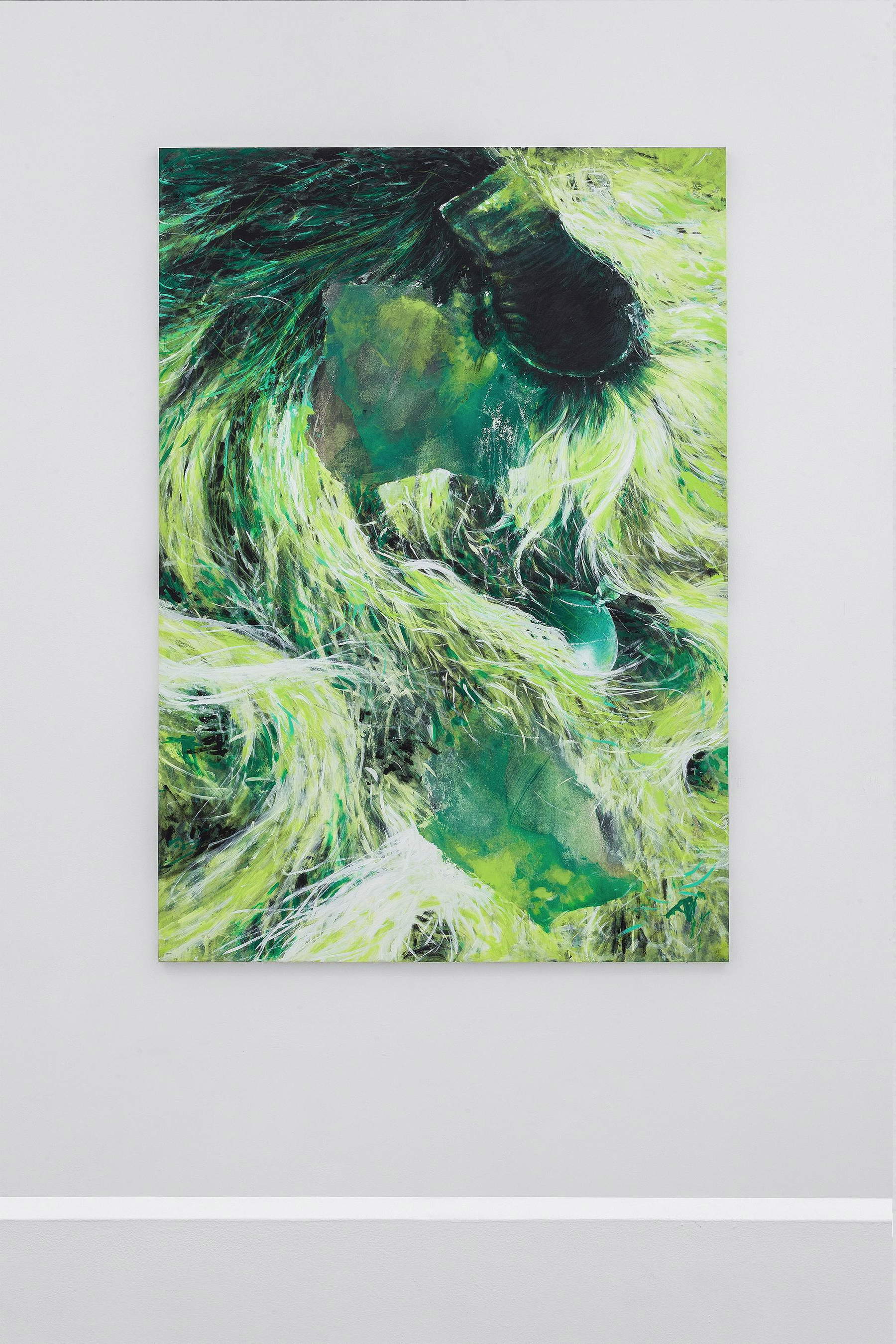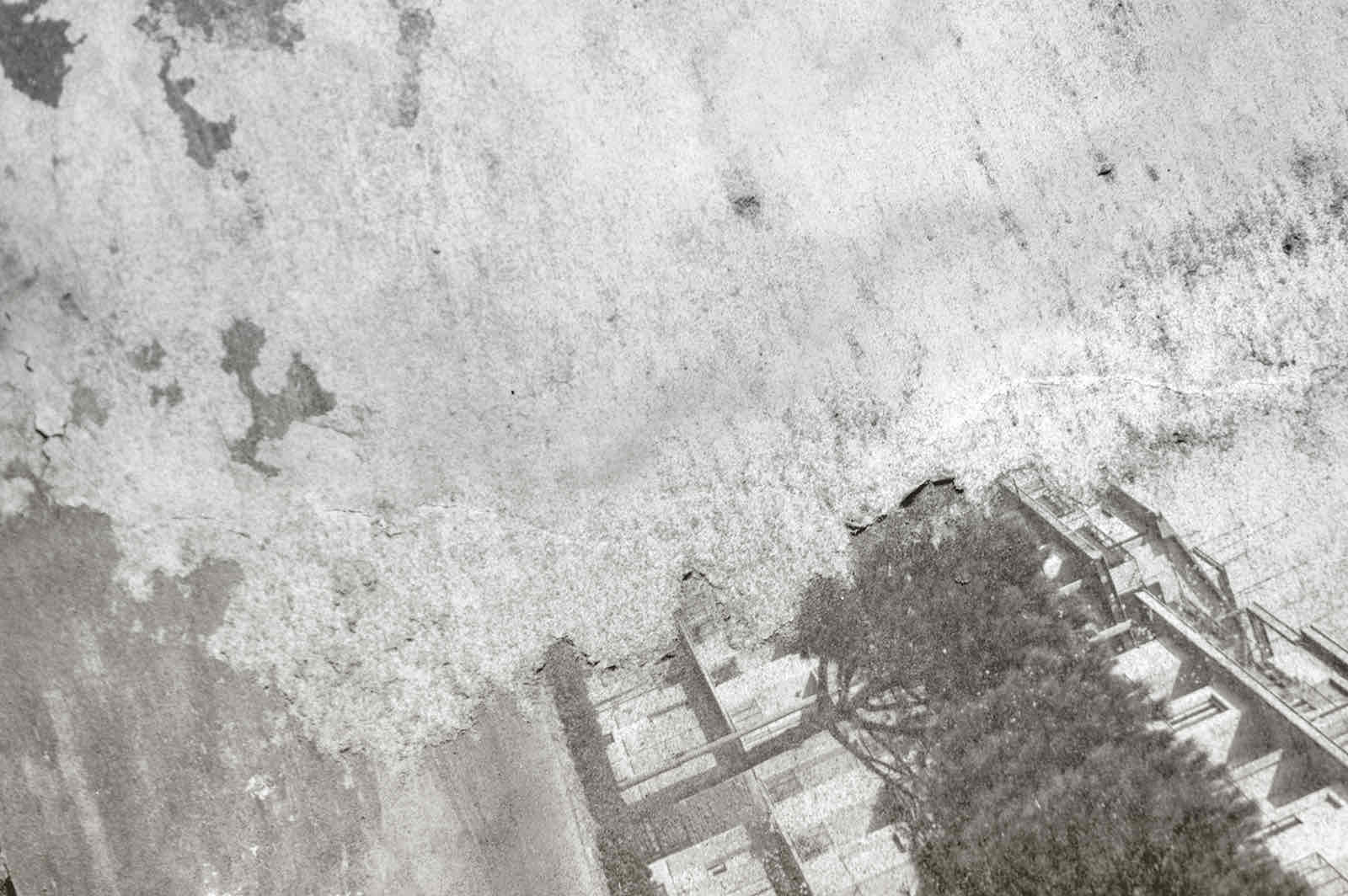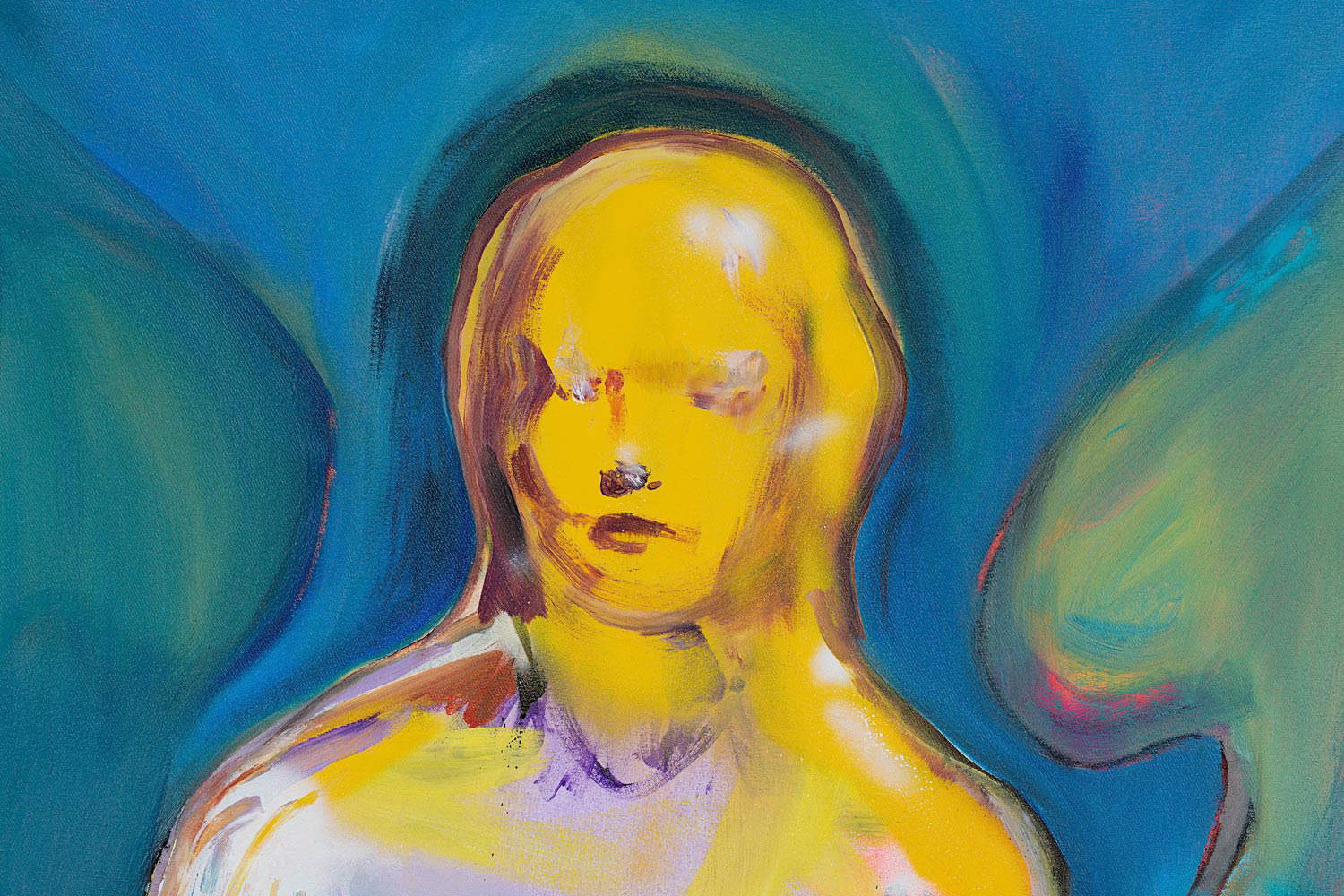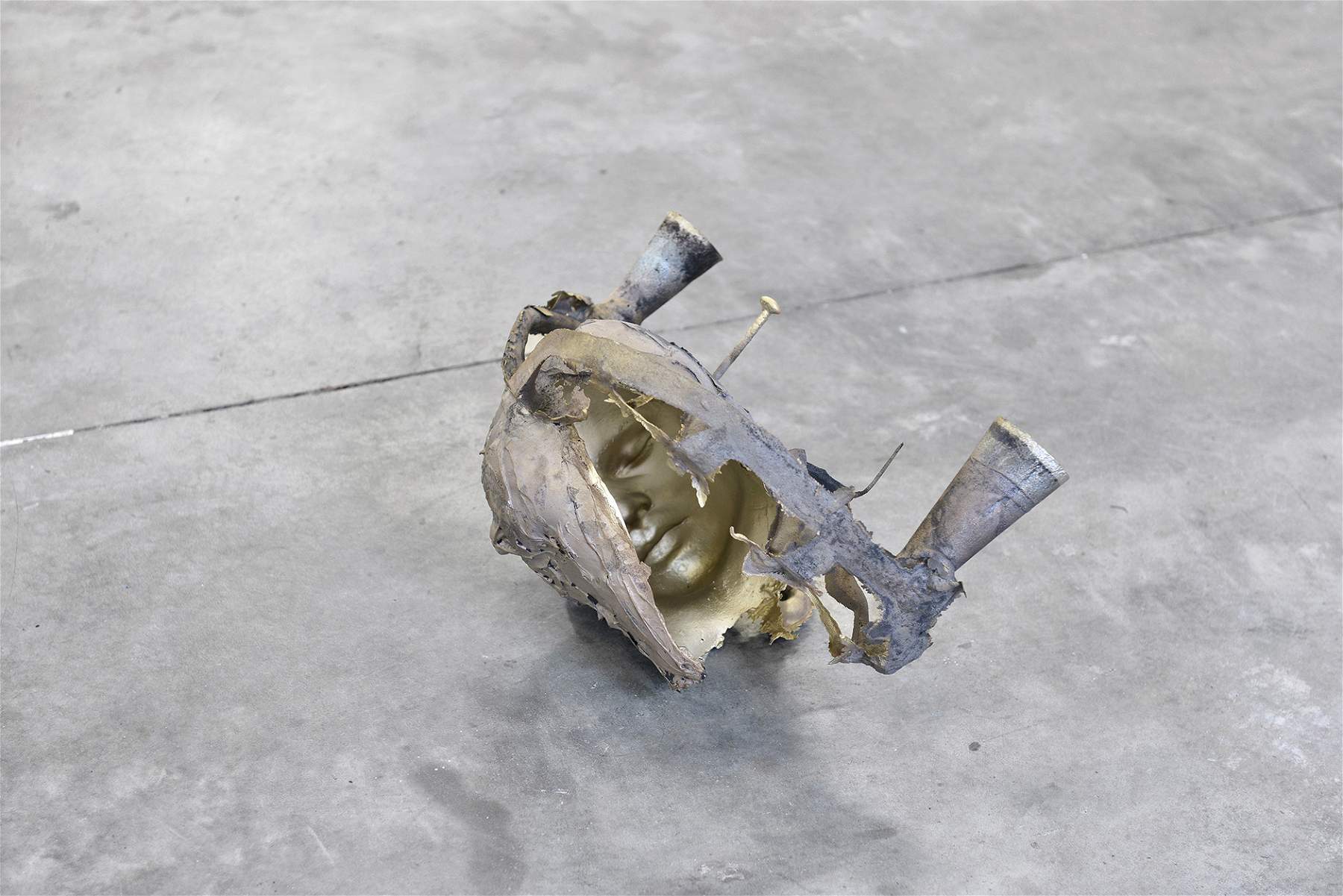After the success of the first edition, as well as lottimo feedback from critics and the public, the Artist Residency Lido La Fortunareturns , promoted by the Cultural Association Lido Contemporaneo in collaboration with the City of Fano Department of Culture and Cultural Heritage and Fabbrica Urbana, and curated by Luca Zuccala and Caterina Angelucci. The three-year project aims to promote and support the work of artists under 35 invited to engage with the artistic, cultural and landscape peculiarities of the Marche region. The artists selected for the 2022 edition are Nicolò Cecchella, Andrea Martinucci, Davide Serpetti and Caterina Erica Shanta. Accompanying them will be two international figures who in diametrically opposite ways have a connection with the city of Fano: Danny Avidan, as place of delection, and Silvia Mariotti, as place of birth. They will be joined by a triad decception: Jingge Dong, Oscar Contreras Rojas and Sophie Westerlind, the three painters protagonists of the 2021 edition who have maintained and cultivated an affective and working connection with the territory. How were the artists selected? How will they work? And above all, how to make contemporary art dialogue with the territory? We put some questions to Caterina Angelucci and Luca Zuccala about the project. The interview is by Ilaria Baratta.




The LIDO LA FORTUNA Artist Residency in Fano is expressly aimed at supporting young artists, under 35. Supporting them and giving them the opportunity to express their creativity and artistic language becomes increasingly important to give them space in the Italian contemporary scene. What opportunities does your Artist Residency offer and how does it intend to help artists promote their work in the three-year project? What does the project provide in summary?
Caterina Angelucci. The review was born with a need that follows a double track: on the one hand the need to introduce in a provincial reality with a “low contemporary concentration” the research of young artists (with already praiseworthy and recognized experiences behind them) who come from the central circuits of the system, and on the other hand the need to offer the invited artists -through confrontation, exchange, reflection, and limmersion in the host territory (rich and pulsating with illustrious cultural and popular memories)-to work (through support covering from food to lodging, to production and final return) in an unfamiliar place, questioning what are the supporting structures of their own research. The dislocation of the studio and a dilated rhythm of daily life, combined with stimuli of a different nature, allow one to cross dimensions hitherto unconsidered and in a certain sense unique, thanks to a spatio-temporal and inspirational conjunction. Lido La Fortuna seeks to build a bridge, an active and reflective channel of communication, between the large metropolitan centers and the reality of a provincial place like the city of Fano, which shows itself open and receptive, exquisitely enthusiastic in opening itself to the foreign gaze and in telling its story by involving. The name, Lido Contemporaneo, makes explicit the double value of this residency project: lido first of all understood as a border place between land and sea, a space of arrival and departure, where the materials brought by the water that in turn come from other shores settle. A mutual exchange between different cultures, identities and practices. Hence the idea of contamination, dialogue, encounter. And on the same hybrid nature are built the three restitution exhibitions: in Fano, at Fabbrica Urbana, from August 19 to September 8; in Pergola, at Casa Sponge, from September 11 to 30; and in Milan, at the Italian headquarters of the Artcurial auction house (Corso Venezia, 22), from October 6 to 18. Three different exhibition moments that bring the outcomes of the residency period to a diverse audience and collector base.
Can you give a brief introduction of the artists chosen? What cities do they come from?
Caterina Angelucci: Invited this year are, Andrea Martinucci (Rome, 1991) who lives and works between Rome and Milan and Davide Serpetti (L’Aquila, 1990) divided between Italy and the United States, who work mainly in the medium of painting; while for photography-although it is reductive to identify them only through this medium, we can in fact speak of metaphotography or postphotography, but they are also video and sculpture-Nicolò Cecchella (Reggio Emilia, 1985) who lives and works between Reggio Emilia, Modena and Rome and Caterina Erica Shanta (Germany, 1986) who lives and works between Turin and Pordenone. All four, as anticipated above, with experiences recognized both nationally and internationally, currently among the most important names on the Italian contemporary scene.
How will they be brought to confront the artistic, cultural and landscape peculiarities of the Marche region? Will they also confront the local artistic community?
Caterina Angelucci: From the peasant culture of the hinterland to that of seafaring, from historical-artistic memories to popular traditions, an ad hoc path was built that could suggest and accompany the work of the four artists in residence, offering food for thought and themes to explore, materials to work on and others instead to discard (it is also interesting to see what is not chosen by one artist and instead accepted by another). In particular, this year despite the organization of appointments and activities-such as the boat outing with the fishermen, the visit to the city with larcheologist, the meeting with university professors of art history and Italian literature, as well as of marine biology-the program was every day re-discussed, changed, adapted to more needs and different necessities. If from an organizational point of view this type of conducting requires extreme elasticity, from a curatorial and, I would add, human point of view (because the opportunity that a residency offers but is never unidirectional) allows, through dialogue and confrontation between organizers and artists, the possibility of creating an increasingly welcoming and unique situation aimed at production. Not limiting oneself to simply conducting a role thus leaves room for what we mean by contamination, not only therefore between practices, cultures and identities but also between the working and human, experiential and inspirational dimensions that mix, mingle and merge with the contingency of living. I quote Angela Vettese who in the preface of an experience of residency between the Bevilacqua La Masa Foundation and the Spinola Banna Foundation (2010 2012) compares these moments of coexistence to an aquarium: moments that can be made one’s own that for short periods, in which one gets away from the world of competition or external survival and that offer a possibility of lightness, a condition for heavy thinking. The local art community is also involved, of course, but not only. We also intend to network with other festivals in the area such as, for example, Centrale Fotografia (Fano) and Traffic Festival (San Lorenzo in Campo Pergola), and other cultural realities, primarily Casa Sponge. Related to this intent, finally, is the choice to invite for the final exhibition two artists who have made Fano a point of departure and a point of arrival: Silvia Mariotti (Fano, 1980) among the most important representatives of contemporary Italian photography and Danny Avidan (Tel Aviv, 1989) who has chosen to move his studio from Berlin to the province of Pesaro and Urbino.
You have chosen artists who use painting and photography, two traditional mediums. To what is this choice due? Are these two languages that can best relate to the Marche region?
Luca Zuccala: Exactly. It was really a very specific choice. We wanted to work on two different levels: the simpler and more immediate one of painting, in quotation marks, in order to capture and tell in the most direct way peculiarities, temperatures and nuances of the place in question, mediated and filtered by the educated and sensitive eye of the artists; and the more expanded and processual one of photography, or rather post-photography, contemporary; both to witness one of the most current and interesting researches in terms of language to read and decipher contemporaneity through its congenital being spurious, hybrid, contaminated; as well as to “enter” a virgin territory, from the point of view of contemporary research, such as that of the Upper Marches, reasoning and telling -first and foremost to the community- the penetrating force and power in weaving new and unusual plots and correspondences of the medium, relating to the socio-cultural and natural-landscape fabric, working on the anthropology of places, ancient narratives, myth and so on. To unfold how this new generation of artists (born between the 1980s and early 1990s) can through the expanded and conceptual medium of today’s photographic medium reread, reinterpret and transfigure nature, culture, community, and the history of a place by tracing new paths, igniting long-dormant energies, translating it all into new and dense perspectives, connecting it all through the universal language of art. Same “layered” discourse for the so-called Restitution, that is, the post-residency exhibition. We conceived the exhibition in various locations by working on various levels. All (the communities) and all (the levels) of sublime quality, all with a different substratum, dimension and connotative reality. So always a different challenge for each chosen exhibition location.
The Return, the Local, the Peripheral, the Territory, the idea of community-these are the themes the artists will have to deal with. So you have chosen to focus on the relationship between the artist and their environment. How important do you think this relationship is for an artist? How much does an artist need to feel included within a territory, even if it is different from his or her home territory, and within a community?
Luca Zuccala: A stratified and history-saturated reality such as that of Fano and the upper Marche region could not necessarily but be grasped through the eye of painting and the photographic image of artists with a now mature curriculum and with years of study and research at the international level behind them, precisely also as places experienced and made their own in order to be “brought” and transported to the Residency. We believe that this “foreign”, “other” outlook, rich in experiential and cultural baggage gathered around the world that can be mediated in a Residency project such as ours, is fundamental. Serious, sincere and deep dialogue between artist and environment, then with artist and community, is absolutely fundamental. Without a respectful and osmotic dialectic between the two figures in question, there can be no effective and constructive Residency, which can leave critical mass for the inhabitants and the whole territory. Therefore, the artist must necessarily feel at home, a factor that both we curator-organizers and they themselves must cultivate and raise awareness through a slow, respectful and deep understanding of all parties involved, beginning with those who have always inhabited the place. One of the most beautiful responses we have had in both the first and this edition is precisely the very strong bond that has been created between the artists and the community. This has meant, for example, that all three of last year’s painters (Jingge Dong, Oscar Contreras Rojas and Sophie Westerlind) have returned to work or hold panel discussions in Fano even after the Residency project. The concept of the Return, in addition to the level, of returning to work on the infinite potential of the Local and its fruitful dialogue with the Center, was also revealed in the meaning of physical and mental return of the artists as the land left something seriously authentic, touching some deep chords. A sine qua non for the birth and growth of the project was precisely the sharing with the local administration for an osmotic doing of long-term growth. No spot thing, a one-night stand, but painstaking and dialectical work with the community, local identities and culture for a common inclusive participatory perspective.
In conclusion, how do you see the current situation for young artists? In your opinion, are they sufficiently supported in Italy? What would you propose to support them more?
Luca Zuccala: Dramatic and desperate. There is no solution. It is a problem both of the forma mentis of the artists themselves, who are more artisans and anchored to a limited and local vision of problem-solving and vision, and a country that doesn’t give a damn about contemporary art at all. Outside national borders we do not exist. For now, there is no escape, except for the one that the artists themselves must take to escape beyond the Alps and build a career and a path of their own without waiting for the Italian pneumatic vacuum.
Warning: the translation into English of the original Italian article was created using automatic tools. We undertake to review all articles, but we do not guarantee the total absence of inaccuracies in the translation due to the program. You can find the original by clicking on the ITA button. If you find any mistake,please contact us.